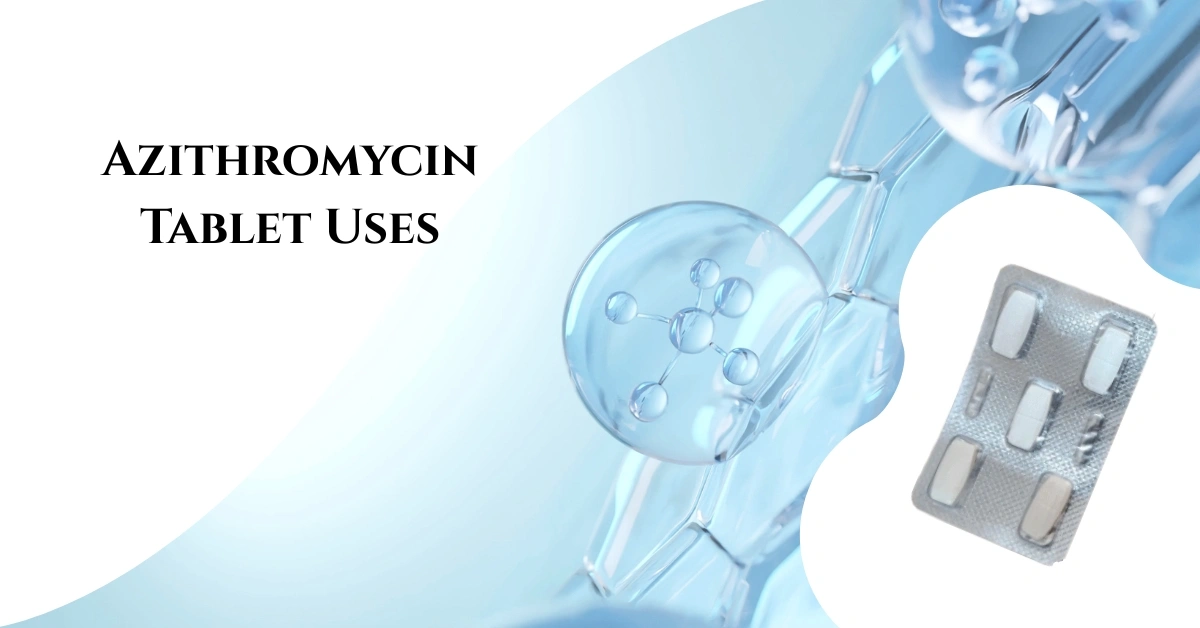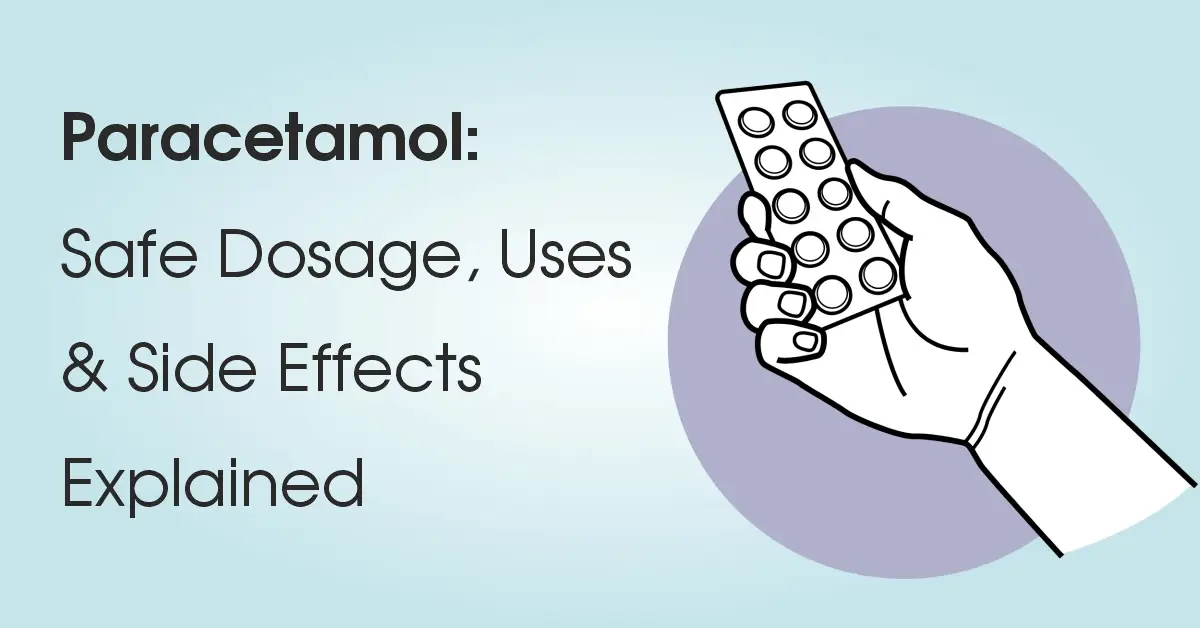Aceclofenac is a widely used pain-relief medicine, commonly prescribed by doctors in India for joint pain, swelling, and muscle stiffness. It belongs to a group of drugs called NSAIDs (non-steroidal anti-inflammatory drugs), which work by reducing the substances in the body that cause inflammation and pain.
In Indian prescriptions, Aceclofenac holds a strong place due to its fast action and generally well-tolerated nature. Doctors often choose it for patients suffering from arthritis, back pain, or post-injury inflammation. It’s available under several trusted brand names and is known for offering good relief without the stronger side effects of steroids.
This blog aims to explain Aceclofenac in a clear and practical way — including how it works, where it’s used, how to take it safely, and what side effects to look out for. If you’re using this medicine or just want to understand it better, you’re in the right place.
What Is Aceclofenac Tablet?
Aceclofenac is a prescription medicine used to reduce pain and inflammation in various conditions related to bones, joints, and muscles. It belongs to a group of medicines called NSAIDs (non-steroidal anti-inflammatory drugs), which are commonly prescribed for arthritis, injuries, and other painful conditions where swelling is involved.
Like other NSAIDs, Aceclofenac works by blocking the action of certain chemical messengers in the body — mainly prostaglandins. These are the substances that cause pain, swelling, redness, and heat in inflamed areas. By lowering the level of these prostaglandins, Aceclofenac helps bring down pain and swelling without using steroids or heavy narcotics.
This medicine does not cure the underlying disease but helps in managing the symptoms so that daily activities become easier. It is typically used for short- to medium-term pain management unless otherwise directed by a doctor.
In addition to common market brands, several formulations of Aceclofenac are available under the Rosette Pharma label. These offer targeted relief for different types of pain and inflammation, often in combination with other helpful ingredients like Paracetamol, Serratiopeptidase, or muscle relaxants.
Here are some of the key Aceclofenac-based products we offer:
| Product Name | Composition |
|---|---|
| Acedol-SR | Aceclofenac 200mg (Sustained Release) |
| Acedol Plus | Aceclofenac 100mg + Paracetamol 325mg |
| Acedol-SP (Blister) | Aceclofenac 100mg + Paracetamol 325mg + Serratiopeptidase 15mg |
| Acedol SP (Alu) | Aceclofenac 100mg + Paracetamol 325mg + Serratiopeptidase 15mg |
| Acedol Spas | Aceclofenac 100mg + Drotaverine HCl 80mg |
| Acedol-MR | Aceclofenac 100mg + Paracetamol 325mg + Chlorzoxazone 250mg |
| Brintop-Ace | Rabeprazole 20mg + Aceclofenac 200mg |
These variants are designed for specific patient needs — from chronic joint conditions to acute pain and muscle spasms — with enhanced absorption and combined benefits for faster recovery.
Aceclofenac Tablet Uses

Aceclofenac is commonly prescribed for a wide range of painful and inflammatory conditions, particularly those affecting the joints, bones, and muscles. It does not cure these conditions but helps manage the symptoms so that patients can move more comfortably and go about their daily life with reduced discomfort.
Below are the most common medical uses of Aceclofenac as approved by doctors and healthcare professionals.
Approved Medical Uses
- Osteoarthritis – Helps reduce pain, stiffness, and swelling in joints, especially knees and hips, caused by cartilage wear and tear.
- Rheumatoid Arthritis – Controls chronic inflammation in joints due to autoimmune reaction, reducing long-term joint damage.
- Ankylosing Spondylitis – Relieves spinal and hip pain caused by this type of arthritis affecting the backbone.
- Musculoskeletal Disorders – Used for general muscle and joint pains, including soft tissue injuries and localized inflammation.
Other Conditions Treated
- Toothache – Often prescribed after dental procedures or for acute dental pain.
- Back Pain – Useful for lower back stiffness or strain-related inflammation.
- Post-operative Pain – Helps manage swelling and discomfort after minor surgeries.
- Injury-Related Swelling – Reduces inflammation caused by sprains, strains, or sports injuries.
Dosage and How to Take Aceclofenac
The dosage of Aceclofenac can vary slightly depending on the condition being treated, the patient’s overall health, and how their body responds to treatment. However, there are some general guidelines most doctors follow, especially for adults.
Standard Adult Dose
For most adults, the usual recommended dose is:
- 100 mg twice a day, ideally every 12 hours (e.g., morning and evening)
It is important to take Aceclofenac after meals to reduce the risk of stomach irritation. Swallow the tablet whole with water — do not chew or crush it. Taking it with food also improves its absorption and minimizes gastric side effects.
Special Considerations in Certain Patients
In some cases, doctors may adjust the dose or suggest more careful monitoring. These include:
- Elderly Patients
Metabolism slows with age, so doctors may start with a lower dose or closely monitor for side effects like indigestion, fluid retention, or kidney issues.
- Patients with Liver or Kidney Issues
If you have impaired liver or kidney function, the dose may need to be reduced or spaced out to avoid drug accumulation in the body.
- Children and Adolescents
Aceclofenac is generally not recommended for children unless specifically advised by a pediatric specialist.
Missed Dose or Overdose
If you forget to take a dose:
- Take it as soon as you remember.
- But if it’s almost time for the next dose, skip the missed one. Do not double up.
In case of an accidental overdose, symptoms may include:
- Severe stomach pain
- Vomiting (possibly with blood)
- Drowsiness or dizziness
- Breathing difficulty
If overdose is suspected, seek emergency medical help immediately.
Duration of Use and Monitoring
Aceclofenac is usually prescribed for short-term use — typically a few days to a couple of weeks — depending on the condition.
For long-term or chronic conditions like arthritis, doctors may recommend periodic check-ups to monitor:
- Liver and kidney function
- Gastrointestinal health
- Blood pressure and heart health
Regular follow-ups ensure the medicine is still safe and effective for your body over time.
Side Effects of Aceclofenac Tablet
Like all medicines, Aceclofenac may cause side effects — though not everyone gets them. Most people tolerate it well when taken at the correct dose with food, but a few may experience discomfort or serious reactions, especially with long-term use or if taken without medical advice.
Understanding the possible side effects can help you take timely action and use the medicine more safely.
Common Side Effects
These are usually mild and temporary. Inform your doctor if they persist or get worse:
- Gas or bloating
- Nausea or vomiting
- Abdominal pain or indigestion
- Headache or dizziness
- Mild increase in liver enzymes (usually found during blood tests)
Rare but Serious Side Effects
These require immediate medical attention. Stop the medicine and consult a doctor if you notice:
- Blood in vomit or stools (sign of internal bleeding)
- Stomach or intestinal ulcers
- Sudden allergic reactions — rash, itching, swelling of the face or throat
- Difficulty breathing
- Signs of liver problems — yellowing of skin or eyes (jaundice), dark urine
- Signs of kidney trouble — reduced urine output, swelling in legs or feet
When and How to Report Side Effects
- Stop taking Aceclofenac and contact your doctor immediately if:
- You experience any severe stomach pain, unusual tiredness, or skin rashes
- You feel lightheaded, breathless, or notice any unusual swelling
- You’ve been taking the medicine long-term and start feeling unwell
In India, serious adverse effects can also be reported to the Pharmacovigilance Programme of India (PvPI) through your local pharmacist or doctor.
Who Should Avoid Aceclofenac?
While Aceclofenac is effective in relieving pain and inflammation, it is not suitable for everyone. Certain health conditions or situations can increase the risk of complications, especially if the medicine is taken without proper medical supervision. Here’s who should avoid using Aceclofenac or take it only under strict medical guidance.
Contraindications (Who Should Not Take It at All)
Avoid Aceclofenac if you have:
- A known allergy to Aceclofenac or other NSAIDs like Ibuprofen or Diclofenac
- Active stomach or intestinal ulcers
- A history of gastrointestinal bleeding
- Bleeding or clotting disorders
- Severe heart, liver, or kidney failure
Taking Aceclofenac in these cases may worsen your condition or lead to life-threatening complications.
Pregnancy & Breastfeeding Warnings
- Not recommended during the third trimester of pregnancy, as it may affect the baby’s heart or kidneys and prolong labor.
- During the first and second trimesters, it should be used only if absolutely necessary and prescribed by a doctor.
- Limited data is available for use during breastfeeding, so it’s best to consult a healthcare provider before using it while nursing.
Drug and Substance Interactions
Aceclofenac can interact with other medicines or substances and increase the risk of side effects:
- Alcohol – Raises the risk of stomach bleeding
- Blood thinners (e.g., Warfarin) – Increases bleeding risk
- Other NSAIDs – May worsen gastrointestinal or kidney side effects
- Corticosteroids – Combined use may increase ulcer risk
- Diuretics and antihypertensives – May reduce their effectiveness when taken together with Aceclofenac
Always inform your doctor about any medication or supplement you’re taking — even herbal or over-the-counter products.
Disclaimer
This article is for informational purposes only. Always use Aceclofenac under medical supervision.
- Seek immediate medical help if you notice:
- Bloody stool or vomiting
- Severe stomach pain
- Skin rash or swelling
- Breathing difficulty
- Yellowing of skin or eyes
FAQs
Can I take Aceclofenac on an empty stomach?
No, it should always be taken after food to avoid stomach irritation.
How fast does it work?
You may start feeling relief within 30 minutes to 1 hour of taking the tablet.
Can I combine it with Paracetamol?
Yes, but only if prescribed. Many formulations already include both together.
Is it safe for long-term use?
Long-term use should be monitored by a doctor due to risks to the stomach, kidneys, or heart.
What lifestyle habits help?
Staying active, eating anti-inflammatory foods, and avoiding smoking or alcohol may improve joint health
What to do if I miss a dose?
Take it when you remember. Skip if it’s almost time for the next dose — don’t double it.
Are there food restrictions?
Avoid alcohol and very spicy or acidic food, which may irritate the stomach.
What is Aceclofenac tablet used for?
It’s used to relieve pain and swelling in arthritis, back pain, and muscle or joint injuries.
What is the difference between Aceclofenac and Paracetamol?
Aceclofenac reduces both pain and inflammation, while Paracetamol mainly reduces pain and fever.
Does Aceclofenac reduce BP?
No, it doesn’t lower blood pressure — but long-term use may affect kidney function, which can impact BP indirectly.
Is Aceclofenac used for headaches?
It’s not a first-choice drug for headaches, but doctors may use it in specific cases where inflammation is involved.




